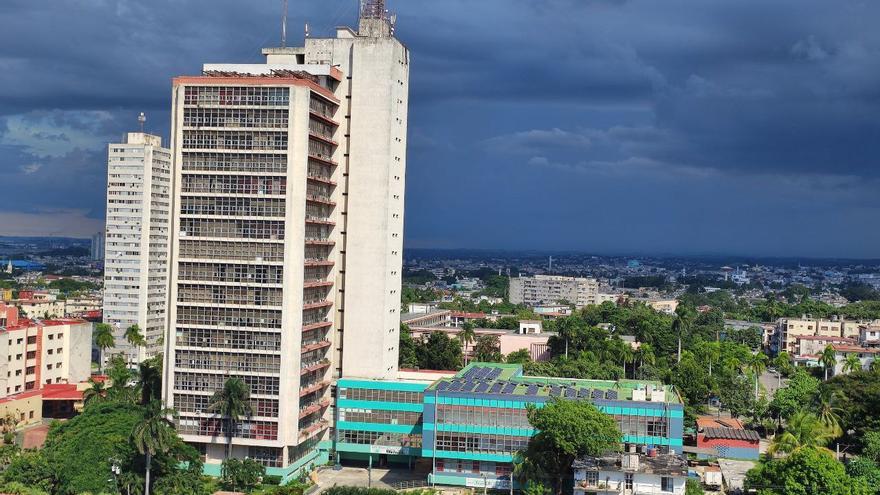
![]() 14ymedio, Natalia López Moya, 13 September 2022 — “We spent days eating saltines because there’s no rice or food,” complains an employee of the Ministry of Agriculture. The man is considering leaving his job if “lunch continues being so bad” in the institution that governs state production of the Cuban farms, located in a 17-story building on the corner of Conill and Rancho Boyeros, in Havana.
14ymedio, Natalia López Moya, 13 September 2022 — “We spent days eating saltines because there’s no rice or food,” complains an employee of the Ministry of Agriculture. The man is considering leaving his job if “lunch continues being so bad” in the institution that governs state production of the Cuban farms, located in a 17-story building on the corner of Conill and Rancho Boyeros, in Havana.
“People believe that since this is the Ministry of Agriculture we must be swimming in abundance here, but there is none,” advises one of the entity’s workers who prefers to remain anonymous. “The last few months have been very difficult, and the cooks have to be inventive in order to serve something.” The greatest deficit is from the products that arrive from the fields.
Although from 2009, then-president Raúl Castro promoted a process of eliminating lunch in state centers, many of the ministries and institutions of the major hierarchy maintained that practice. At a subsidized price, but with little variety and low quality, the employees of these entities receive a daily portion of food to continue their working day.
Now, the economic crisis, which has deepened in recent months, together with inflation and the low productivity of Cuban farms, have put at risk the lunch of these workers, who, until recently, were privileged within the state sector. Guillermo was a cook for many years in a unit of the Union of Young Communists in Havana, and he confirms it.
“When the shortage was already affecting everyone, in my workplace the UJC cadres were still allowed to have a snack, coffee in the mornings and lunch with a protein every day,” he tells this newspaper. “But since the beginning of this year, everything has gone downhill.”
“Sometimes I thought that they invented meetings, even if they had nothing to say, in order to justify the consumption of rolls, coffee and soft drinks as a snack,” Guillermo explains. “The same day I found out that no more lunch was going to be served, I asked for leave, because what’s the point of being a cook in a place that isn’t cooking.”
In the Ministry of Agriculture, the rigors of the employees’ canteen reached the ears of the head of the branch, Ydael Pérez Brito. “He said that this had to be solved, and how was it possible that there wasn’t any cassava, malanga or sweet potato here to give to people who go to the canteen,” says an employee of the security area of the institution.
The canteen, located on a side wing of the building, which faces Santa Ana Street, is a huge room that for years has been large for a Ministry that has seen its workforce decrease as the state salary is devalued and the prices of basic products rise. “This was built at the time when the Soviet Union sent money, a lot of money,” the source says.
“In this place, food was served that was the envy of any restaurant. The food, vegetables and fruit were plenty, not to mention pork and chicken.” But those trays with varied food options remain only in the memory of the workers who have been in the institution for more than three decades.
“Most people now bring something from home to last all day because many times it’s not worth going down to the canteen,” the worker explains. “But with the bread situation, there’s no guarantee of bringing a snack, so the only choice is to go and see what they serve.”
In recent weeks, the huge room has been emptier of diners and food. “This looks more like a funeral home than a Ministry of Agriculture, because lunch is dead, dead.”
Translated by Regina Anavy
____________
COLLABORATE WITH OUR WORK: The 14ymedio team is committed to practicing serious journalism that reflects Cuba’s reality in all its depth. Thank you for joining us on this long journey. We invite you to continue supporting us by becoming a member of 14ymedio now. Together we can continue transforming journalism in Cuba.
